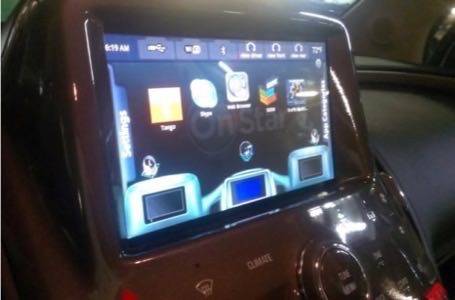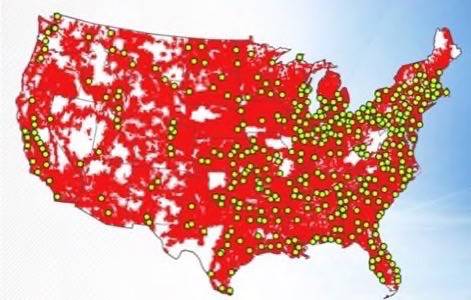
The vision of an Internet-connected car is already a reality in many ways. With a smartphone or tablet as your traveling companion, there is not much you cannot do from within a vehicle. But truly networked personal transportation is still a few years off. It is not as simple as embedding a tablet in the dashboard. It requires a revamped infrastructure.
A connected car has been making the rounds of technology conferences and exhibitions this year. The 4G Chevy Volt is a hybrid sedan created in partnership with General Motors, OnStar and Verizon. ReadWriteWeb’s Richard MacManus reviewed it earlier this year after getting a glimpse at Austin’s SXSW confab in March.
While Richard focused on the infotainment aspect of the Volt (two tablets in the back seat can be controlled from the dashboard), the car has other network connections. The OnStar system can control many of the car’s functions, and it can send and receive messages and connect to almost any app in Android’s Google Play store. To make all this work, though, you need constant cellular connectivity.

OnStar spokesperson Jeff Wandell said that the Volt, while interesting, is still in its research and development phase. We are not likely to see a real, working model available for sale for several years, probably by 2015. OnStar could choose a different operating system (such as Windows or iOS) instead of Android and improve the connection between the car and the home, among other possible innovations. The proposed features of the 4G Volt are not the story though. Really, the crux lies with Verizon and every other mobile data provider in the United States.
4G LTE is still in its infancy in the U.S. Carriers like Verizon and AT&T are still building out basic capabilities to regions around the country and optimizing cell towers to handle the traffic. In terms of breadth of coverage, Verizon is well ahead of both AT&T and Sprint, but the fact of the matter is that LTE is still not ready to support a fleet of connected cars roaming across the country, constantly looking for a signal. For an automobile whose basic functions depend on being LTE-connected, that is a bit of a problem.
The problem of connecting the Volt, an object, to the Internet with a persistent connection is not a problem just for the automobile industry. The “Internet of Things” (connecting objects to the Internet, like a heart sensor or a thermostat) will rely on cellular connectivity. As we noted in a past installment of The Futurist’s Cheat Sheet series, the Internet of Things (including connected cars) is already a reality. Yet the Internet of Things’ growth is hindered not by the capabilities of the objects, but by the infrastructure that will connect them.

Connected cars like the Chevy Volt are a harbinger of the next evolution of infrastructure in the U.S. Just as the Interstate Highway System revolutionized the country in the 1950s, LTE connectivity will bring about a new transformation. But, like the highway system, it will take time to build. After the passage of the Federal Highway Act in 1956, the original plan was not completed until 1992. Likewise, companies have been building cellular capabilities in the U.S. since the 1970s and each successive iteration (2G to 3G to 4G and so on) takes time and billions of dollars to accomplish on a meaningful scale.
The building of a 4G infrastructure is a complicated matter. Radio spectrum, which carries data over the air, is a finite commodity. Carriers are acquiring and consolidating spectrum for LTE networks, and it is a tricky landscape to navigate between the federal government’s spectrum auctions and competitors like cable networks or spectrum-hungry companies like Google. Unlike the Interstate Highway System, cellular infrastructure is being built by private companies, not the government. Each has its own motivations (such as quarterly profits) and is subject to federal scrutiny.
Despite the barriers, companies like Verizon are building the next generation of American infrastructure more efficiently than the federal government could. That is why the 4G Chevy Volt (and cars like it) are likely to be forming a new kind of transportation network within three or four years, not 10.









